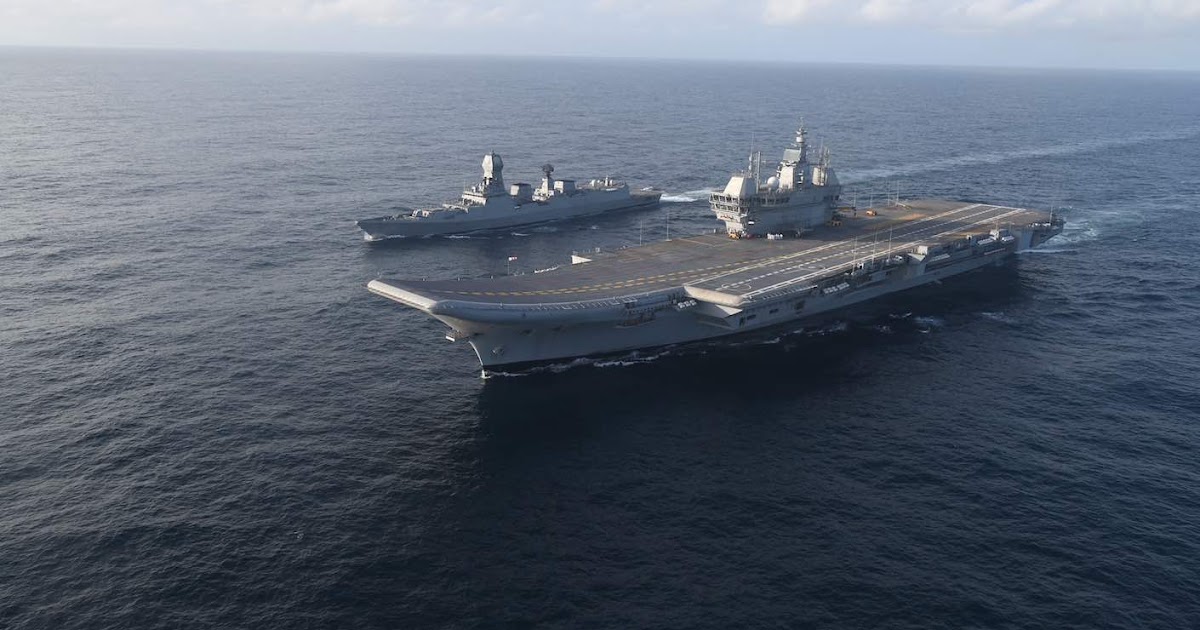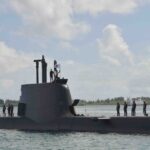
Built at an all-in cost of nearly Rs 20,000 crore ($2.7 billion), the carrier’s keel was laid in February 2009, followed by a launch in August 2013
By Vikas Gupta
Defence News of India, 29 July 22
On a cold and windy morning in Belfast, Northern Ireland, in March 1961, India’s High Commissioner to the United Kingdom, Vijaya Lakshmi Pandit, hoisted the flag of the Indian Navy on Her Majesty’s Ship (HMS ) Hercules, a Royal Navy aircraft carrier that was to be reassigned as Indian Navy Ship (INS) Vikrant.
Until the Vikrant was decommissioned on January 31, 1997, it served the Indian Navy well. During the 1971 war, INS Vikrant blockaded Bangladesh, with its Seahawk fighter jets wreaking havoc on Chittagong and Cox’s Bazaar.
Since 1997, the Vikrant has been a floating maritime museum, moored off Mumbai. But good navies resurrect their battleships. On Thursday at Cochin Shipyard Ltd (CSL), India’s first aircraft carrier was reborn as the First Indigenous Aircraft Carrier (IAC).
For Indian warship builders and especially CSL, the Vikrant is a triumph. Beginning with the construction of 3,200 ton Leander-class frigates in the 1970s and gradually building 6,200 ton Delhi-class and 7,400-ton Kolkata-class destroyers; Indian shipbuilding peaked on Thursday when CSL handed over the 45,000-tonne INS Vikrant to the Navy.
“Designed by the Navy’s In-house Naval Design Directorate (DND) and built by CSL, a public sector shipyard under the Ministry of Merchant Shipping (MoS), the aircraft carrier is named after her illustrious predecessor ( INS Vikrant), India’s premier aircraft carrier which played a vital role in the 1971 war,” a Ministry of Defense (MoD) press release said on Thursday.
The 262-meter-long aircraft carrier is significantly larger and more advanced than its 19,500-ton namesake. The revived INS Vikrant is powered by four gas turbines that generate 88 megawatts (MW) of power, working up to a maximum speed of 28 knots (52 kilometers per hour).
Built at an all-in cost of almost Rs 20,000 crore, the carrier’s keel was laid in February 2009, followed by a launch in August 2013.
“With an overall indigenous content of 76%, IAC is a perfect example of Aatma Nirbhar Bharat (self-reliant India). With the delivery of Vikrant, India has joined a select group of nations with the niche capacity to design and build locally an aircraft carrier,” the Department of Defense said.
The IAC will now be officially commissioned as INS Vikrant, boosting India’s operational profile in the Indian Ocean Region (IOR) and its quest for a high seas navy capable of projecting power. energy to remote areas of interest.
Strike power for INS Vikrant will come from an assortment of fixed-wing and rotary aircraft. Its air wing will consist of around 30 aircraft, including MIG-29K/KUB fighter jets, Kamov-31 and MH-60R multi-role helicopters, as well as Dhruv Advanced Light Helicopters (ALH) and Light Combat Aircraft (LCA). ) native. (Marine).
Vikrant fixed-wing aircraft are designed to operate on the STOBAR principle (short takeoff with barrier landing). This forces the aircraft to take off using a ski jump and land by hooking a tail hook on arrester wires on the carrier’s deck which drag it to a stop.
The 76% indigenization of INS Vikrant comes from sourcing large quantities of indigenous Indian industry equipment and machinery including Bharat Electronics Ltd (BEL), Bharat Heavy Electricals Ltd (BHEL), Garden Reach Shipbuilders and Engineers (GRSE), Keltron, Kirloskar, Larsen & Toubro, Wartsila India and over 100 Micro, Small and Medium Enterprises (MSMEs).
The indigenization requirement developed an ancillary supply chain, generated jobs and reinvested skills. A major spin-off has been India’s development of warship-grade steel, through a partnership between the Navy, the Defense R&D Organization (DRDO) and the Steel Authority of India (SAIL). This made India self-sufficient in warship-grade steel, enabling its use in all contemporary and future warships.
The delivery of INS Vikrant to the Navy was preceded by extensive trials in port and at sea between August 2021 and July 2022,which checked the build quality and performance of the vessel, including its hull, main propulsion, auxiliary equipment, aviation installations, weapons and sensors, as well as its seakeeping and maneuvering capabilities.
“Vikrant’s delivery today is the culmination of a long design, build and test phase, during which the Indian Navy and CSL had to overcome unprecedented technical and logistical challenges, including the pandemic. of COVID-19 and a changed geopolitical scenario,” the MoD said.






